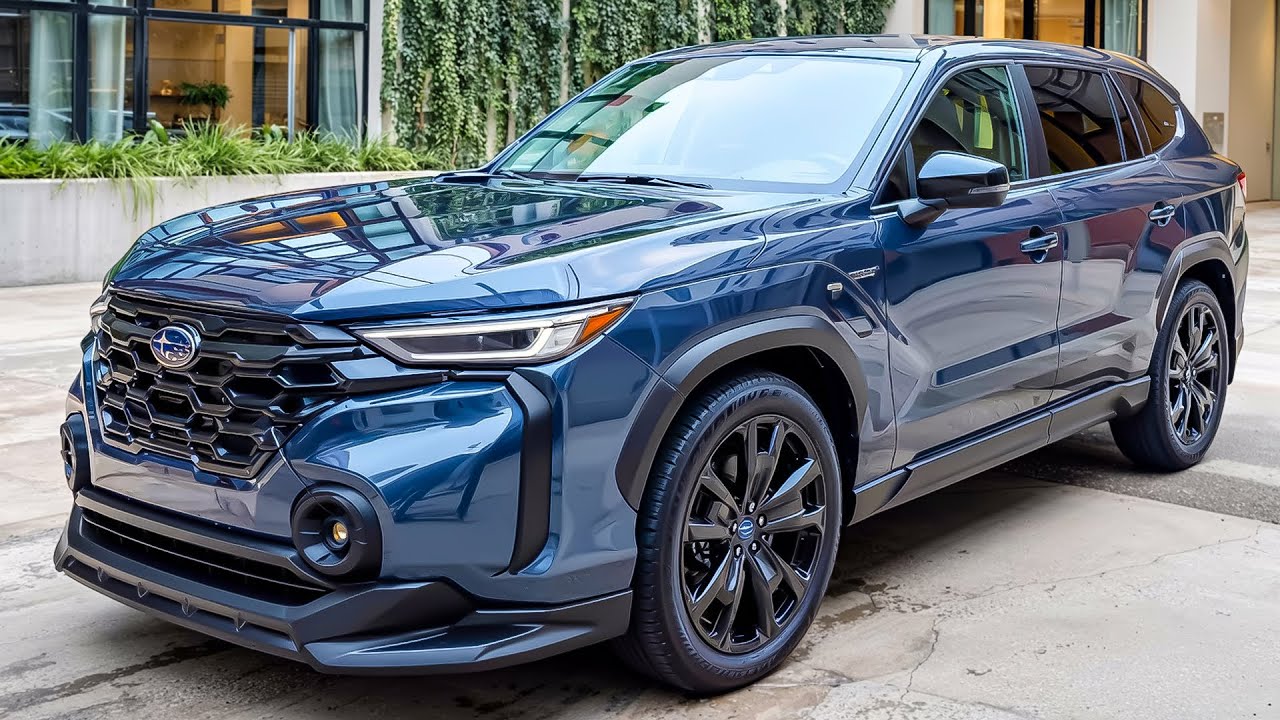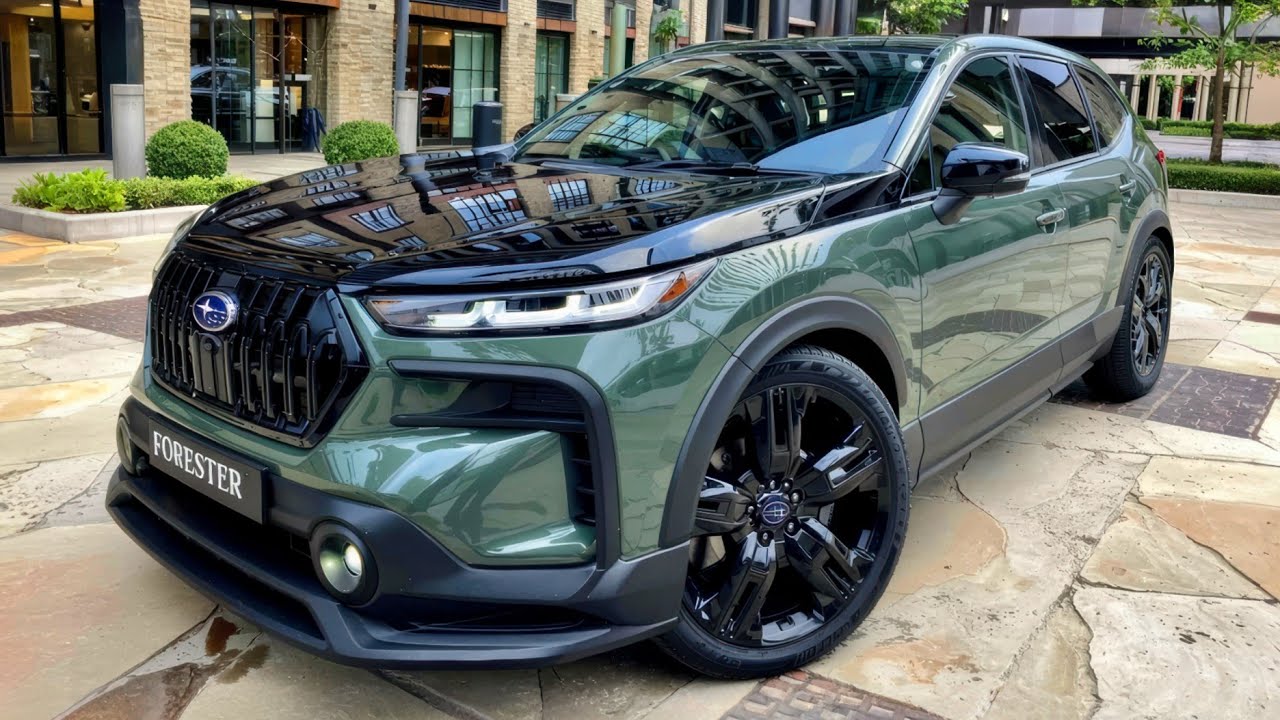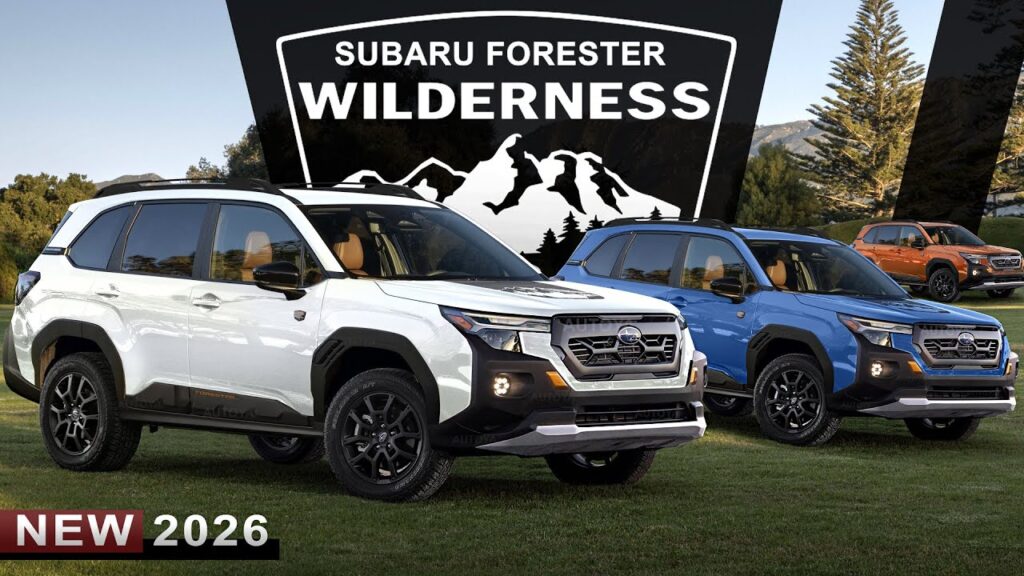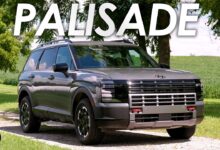The Subaru Forester is an automotive icon, known for its rugged reliability and all-weather capability. But for a certain segment of buyers—those who view a gravel road as a mere suggestion and not a limit—the standard Forester simply wasn’t enough. Enter the Wilderness sub-brand, and with the new generation, the 2026 Subaru Forester Wilderness is back, more capable and more refined than ever before.
This isn’t just a rugged appearance package; it’s a completely re-engineered vehicle designed for the serious adventure seeker. The first-generation Forester Wilderness was introduced as an after-the-fact addition, essentially bolting on off-road features to an existing platform. For the 2026 model year, Subaru engineered the entire new-generation Forester with the Wilderness trim in mind from the very beginning. This holistic design approach results in a vehicle platform that is 10% stiffer than before, translating to inherent improvements in durability, handling, and most importantly, extreme off-road articulation.
In this comprehensive review, we’ll dive deep into what makes the 2026 Forester Wilderness a genuine contender in the burgeoning “rugged crossover” segment. We’ll cover the distinct exterior styling, the surprising interior updates, the crucial mechanical upgrades that unlock its trail prowess, and finally, stack it up against its fiercest competitor to determine if the price truly reflects the performance.
Exterior Redesign: Form Meets Function in the Great Outdoors
The moment you see the 2026 Forester Wilderness, its intent is clear. The vehicle is visually separated from its standard Forester siblings through a series of tactical design changes that are as functional as they are aggressive. Subaru understands that for Wilderness buyers, the look is secondary to the capability it represents.
Ground Clearance and Trail Angles
The most important number for any off-road vehicle is its ground clearance. The new 2026 Forester Wilderness builds upon its legacy by offering a slight, but significant, improvement, now sitting at 9.3 inches of ground clearance—an increase of 0.1 inches over the previous generation. This difference, combined with unique bodywork, pays dividends in tackling difficult terrain.
The bespoke bumpers are the most visible change. They are designed with aggressive cutouts to maximize crucial approach and departure angles, which are vital for climbing steep obstacles and exiting ditches without scraping. The final geometry measurements are highly competitive:
- Approach Angle: 23.5 degrees
- Departure Angle: 25.5 degrees
- Breakover Angle: 21.0 degrees
These figures demonstrate a commitment to true off-road performance, surpassing many rivals in the compact SUV space.
Tires, Wheels, andExperience

To put that clearance to use, the Forester Wilderness is equipped with unique 18-inch wheels wrapped in larger 235-section-width all-terrain tires (up from 225-width before). These Falken Wildpeak A/T tires offer superior traction on loose surfaces like gravel, mud, and snow, a non-negotiable feature for the Subaru Wilderness brand.
Other key exterior features include:
- Anti-Glare Hood Insert: A matte-black decal is placed on the hood to cut down on glare when the vehicle is angled steeply towards the sky, a small but practical detail for trail use.
- Front Camera: A crucial addition for 2026 is the front camera, which provides essential visibility over blind crests and immediate obstacles when off-roading.
- LED Fog Lights: Unique hexagonal LED fog lights provide better illumination in poor conditions.
- Robust Roof Rack: The redesigned roof rack retains its impressive capability, offering an 800 lb static weight capacity. This is essential for mounting heavy gear like rooftop tents while stationary. The dynamic (driving) load capacity is set at 176 lbs.
The exterior aesthetic is finished with copper accents, including on the tow hook covers and side mirrors, and the unique protective cladding that runs along the lower body. This is available in signature colors, including the popular blue and the distinctive green, enhancing the rugged, premium feel of the 2026 Forester Wilderness.
Cabin Comfort and American-Centric Refinement
Stepping inside the 2026 Subaru Forester Wilderness reveals a cabin that balances rugged durability with significant, customer-driven refinements. While the exterior screams adventure, the interior whispers utility and comfort, a combination that resonates deeply with the Subaru owner base who often take their vehicles on long hauls to remote trailheads.
The StarTex Advantage and Comfort Redefined
The Wilderness trim exclusively features StarTex upholstery. This is a synthetic, animal-free, water-resistant material that is incredibly easy to wipe down, making it perfect for muddy boots, wet dogs, or spilled trail coffee. While the material is durable and comfortable—further enhanced by the new-generation Forester’s redesigned, long-distance-optimized seating structure—it lacks perforation. This means ventilated seats are not available, though heating remains a welcome feature for cold climates.
Copper accents continue the exterior theme inside, found on the steering wheel and around the dash, complementing the embossed Subaru Wilderness logo on the headrests. Subaru’s focus on long-term driver comfort is evident, catering to owners known for high-mileage trips.
The Unexpected Center Console Redesign
Perhaps the most surprising change for the 2026 model year is a significant redesign of the center console, which applies to all 2026 Foresters, not just the Wilderness. This change occurred just one year after the model’s new generation debut, a move driven by a manufacturing shift.
Subaru explained that the Forester’s production moved from Japan to the United States (Indiana). This change allowed them to engineer a console specifically for American buyers’ preferences. The new design features a streamlined, smaller shifter and, crucially, larger cup holders capable of accommodating today’s oversized water bottles. The redesign also includes a larger, more usable center armrest that extends further forward, and a dedicated bonus space for keys or a smartphone. This is a clear example of Subaru prioritizing customer feedback and local market needs.
Infotainment and Digital ExperieTrail

The centerpiece of the dashboard remains the familiar 11.6-inch Subaru Starlink touchscreen. While it supports wireless Apple CarPlay and wireless Android Auto, the system’s performance remains a point of contention. It can be laggy, especially during startup or when loading graphics-intensive applications like navigation maps, often cited as one of the slower infotainment systems in the segment.
However, the system is redeemed by the inclusion of physical volume and tuning knobs, along with dedicated hard buttons for climate control. These physical controls are highly appreciated by drivers, especially when navigating bumpy trails where precise touchscreen taps are difficult.
The gauge cluster, however, is a major upgrade. The 12.3-inch digital gauge cluster is a feature exclusively found on the hybrid and Wilderness trims (when equipped with the optional package). This high-resolution screen is notable for its versatility, offering a map view that displays both the built-in navigation and, crucially for Apple users, maps running via Apple CarPlay—a rare but highly useful feature.
The cabin is also audiophile-friendly. The Wilderness trim can be optioned with an 11-speaker, 576-watt Harman Kardon stereo system that delivers excellent sound quality, a consistent high point across Subaru’s lineup.
Off-Road Prowess: Capability That Counts
The heart of the 2026 Forester Wilderness is not its cosmetic package but the substantial mechanical enhancements that truly separate it from its “soft-roader” peers. Subaru has dedicated significant resources to optimizing the drivetrain, a critical factor for the nearly 50% of Wilderness buyers who actively use their vehicles for off-roading.
Drivetrain and X-Mode Optimization
The standard Symmetrical All-Wheel Drive system has been enhanced specifically for this application. Key upgrades include:
- Beefed-up Rear Differential: A larger, more robust rear differential is installed to handle the increased torque demands of low-speed crawling and rough articulation.
- Faster Center Clutch Lock-up: The all-wheel drive system has been optimized for a quicker center differential lock-up. This rapid response ensures power is distributed effectively the moment wheel slip is detected, improving traction and momentum in challenging conditions.
- Steering Angle Data Integration: The system now incorporates steering angle data into its power distribution logic, allowing the AWD system to anticipate traction needs and proactively send torque where it’s needed during maneuvers.
- Transmission Oil Cooler: A dedicated transmission oil cooler is standard, preventing the CVT (Continuously Variable Transmission) fluid from overheating during sustained low-speed, high-stress use, such as deep sand or steep rock climbing. A rear differential temperature sensor also gives the driver greater confidence in pushing the limits of the vehicle’s thermal capacity.
Towing Capacity: A Major Leap Forward
The summation of all these drivetrain enhancements is seen in the vehicle’s significantly increased towing capacity. The 2026 Subaru Forester Wilderness is rated to tow 3,500 pounds, a 500-pound increase over the previous generation and a massive jump compared to the 1,500-pound limit of a standard Forester. This upgrade solidifies the Wilderness as a serious contender for weekend excursions involving small trailers, teardrop campers, or utility gear, greatly expanding its utility.
Tackling tEfficiency

During aggressive off-road testing, the capabilities of the Forester Wilderness specs truly shine. The vehicle handles severely rutted and rough trails with remarkable composure. The aluminum underbody skid plates provide a necessary layer of protection for vital components, adding confidence when traversing obstacles that might otherwise damage the undercarriage.
The enhanced dual-mode X-Mode system, a staple of Subaru’s off-road tech, automatically engages when needed, optimizing throttle, transmission, and AWD response for conditions like snow, dirt, and mud. Hill Descent Control is integrated into this system, automatically using the brakes to manage downhill speed, allowing the driver to focus entirely on steering input—a true crawl control at low speeds. The front camera automatically engages in this mode, further assisting the driver with placement.
Beyond the technical prowess, the narrow body of the Forester allows for more precise line selection on tight trails, providing an advantage over wider, larger SUVs. Furthermore, the famously tall greenhouse and large windows of the Forester are a major asset for off-road sight-seeing, offering the most glass in the segment and enhancing the open-air, connected-to-nature feeling that is so central to the Subaru brand identity. This focus on driver experience, from the large moonroof to the thoughtful storage details, makes it clear that this vehicle was developed by people who actually use their cars for adventurous lifestyles.
On-Road Manners and Performance Limitations
While the 2026 Subaru Forester Wilderness is engineered for the dirt, it is still expected to spend the majority of its life on pavement. Striking a balance between trail dominance and daily drivability is a key challenge for any rugged crossover, and the Wilderness achieves this with commendable refinement.
Handling and NVH (Noise, Vibration, and Harshness)
It’s an unavoidable truth that the all-terrain tires and the higher ground clearance slightly compromise on-road handling compared to a regular Forester. However, the compromise is minimal. The Forester’s inherent low center of gravity, thanks to the Boxer four-cylinder engine, helps it maintain the confident, tucked-in feeling that Subaru drivers expect, aided by standard active torque vectoring that helps the nose feel more neutral in corners.
Crucially, the all-terrain tires manage to remain surprisingly quiet at highway speeds. While a slight hum is present, the road noise is well-managed and often quieter than what is heard from the more aggressive, larger tires found on bigger off-roaders. Wind noise is more noticeable, but overall, the cabin remains a relatively peaceful place for long highway stretches, making it a viable daily driver for those who love the aggressive styling but rarely hit the dirt.
Engine and Acceleration: A Familiar Hurdle
The power plant for the 2026 Forester Wilderness is a mildly revised 2.5-liter Boxer four-cylinder engine. It produces 180 horsepower and 178 pound-feet of torque. While this engine is responsive and the CVT is willing to deliver power quickly, the horsepower figure remains one of the lowest in the compact SUV segment.
Acceleration is adequate for merging and passing but certainly not quick. The CVT operates in a traditional manner, often holding the engine near its redline during hard acceleration, unlike many competitors that now mimic traditional gear shifts. Performance estimates would place the 0 to 60 mph time north of 8 seconds. For the low-speed adventuring and general commuting most buyers will do, this is a non-issue, and the shorter final drive ratio provides a boost in climbing ability compared to a standard Forester. However, for drivers seeking serious on-road punch, this model remains underpowered.
The Call for More Power and Efficiency
Given the vehicle’s environmental focus and the adventurous nature of its buyers, two options are conspicuously absent:
- A Turbocharged Engine: Competitors like the Bronco Sport Badlands offer a turbocharged engine with 250 horsepower. A turbocharger would not only provide much-needed acceleration but would also significantly improve performance at higher altitudes, where the naturally aspirated Boxer engine can struggle due to thinner air.
- A Hybrid Powertrain: While Subaru recently debuted a new Forester Hybrid, the fact that a Hybrid Wilderness model is not available is a missed opportunity, especially given the environmental consciousness of many Subaru owners.
Buyers must currently choose between maximum off-road capability (Wilderness) and increased efficiency (Hybrid/Standard), leaving the door open for future powertrain expansion.
Safety, Fuel Economy, and the Bottom Line
Subaru’s unwavering commitment to safety continues with the 2026 Forester lineup. The Wilderness trim includes a host of safety technologies as standard that are often optional on lower trims, including Blind Spot Monitoring, Rear Cross Traffic Alert, and Rear Automatic Braking.
EyeSight Driver Assist Technology
The renowned Subaru EyeSight system has been improved for 2026, offering better visualization and enhanced detection of pedestrians and bicyclists. A key new feature is the emergency steer assist, which can intervene at speeds under 50 mph to assist the driver in swerving to avoid an imminent accident. The system is generally highly effective, but drivers should note that the lane departure prevention system is noticeably assertive, constantly nudging the wheel to maintain lane center. While very helpful for new drivers, experienced drivers may find it overly aggressive and opt to turn it off—a process that thankfully is easy and remains off between key cycles.
Furthermore, Subaru has addressed newer, more intense crash tests focused on rear occupant safety by redesigning the rear seat belts’ mounting points and setup, ensuring the 2026 Forester Wilderness maintains its heritage of earning top safety ratings.
Fuel Economy
Due to the increased weight, higher clearance, and drag from the all-terrain tires, the fuel economy takes a slight hit compared to the standard Forester. The Forester Wilderness specs are rated by the EPA as:
- City: 24 MPG
- Highway: 28 MPG
- Combined: 26 MPG
These figures are respectable for a vehicle with this level of off-road equipment and are generally aligned with Subaru’s real-world results.
Pricing and Head-to-Head Competition
For those interested in the Forester Wilderness price, the new generation remains highly competitive, especially when comparing capability per dollar.
Forester Wilderness Pricing
The 2026 Subaru Forester Wilderness starts at $39,835, including destination charges. This represents an increase of approximately $2,000 over the last generation, but the increase is justified by the higher level of standard features and mechanical capability improvements.
The featured review vehicle, equipped with the optional package—which bundles the crucial digital gauges, built-in navigation, the Harman Kardon stereo, and a power rear liftgate—comes to an as-tested price of $42,35. This price point positions the Wilderness as an exceptional value proposition in the rugged crossover segment.
The True Rival: Ford Bronco Sport Badlands
In the compact segment, the only true competitor with comparable, though slightly different, off-road engineering is the Ford Bronco Sport Badlands. Many other “rugged” crossovers simply offer tires and a sticker package, but the Badlands is a legitimate alternative.






